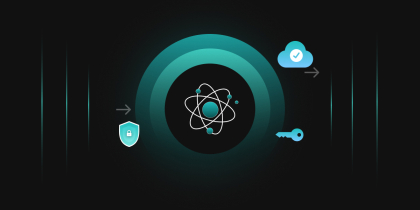Introduction
A cryptographic inventory is a comprehensive catalog of all cryptographic assets within an organization, including keys, certificates, and algorithms, that enables visibility, lifecycle management, and risk mitigation.
Many organizations manage massive cryptographic assets, such as thousands of certificates, keys, etc., across their infrastructure, yet the majority of them have not implemented centralized cryptographic management solutions. This might lead to cryptographic sprawl representing both operational risk and compliance challenges, as organizations cannot protect, rotate, or migrate assets they cannot identify, categorize, and document systematically. Therefore, every organization should build a cryptographic inventory.
To clearly understand why auditing your cryptographic inventory matters, you need to look at it in the wider context of managing all cryptographic assets. In Why Your Cryptographic Inventory is Your Master Key, we break down the foundational elements every organization should establish. Now, moving on, let us discuss the role cryptographic inventory plays in the quantum computing era.
The role of cryptographic inventory in PQC
Building a comprehensive cryptographic inventory is essential to an organization as it allows them to achieve visibility into how cryptography is applied across their systems, servers and applications, etc. and prepare for the transition to PQC, a zero-trust architecture, etc. Therefore, organizations should initiate the cryptographic discovery process proactively to identify the organization’s current level of dependency on quantum-vulnerable cryptography and build an inventory of them.
1. Helps organizations to become quantum-ready
A cryptographic inventory shows where and how algorithms vulnerable to quantum attacks are used within the organization. This visibility helps an organization to understand which systems and datasets will be at risk once Cryptographically Relevant Quantum Computers (CRQCs) come into existence. And therefore, after gaining visibility and understanding the weaknesses, organizations can plan ahead for the PQC migration.
Without inventory, organizations cannot know whether they’re still relying on SHA-1 for signatures, or whether they’ve already transitioned to SHA-2/SHA-3. This is the “cryptographic debt”, i.e., systems using deprecated algorithms, insufficient key lengths, or weak implementations create vulnerabilities and act as a hindrance to achieving compliance, and inventories are the only way to manage that debt.
To summarize, a comprehensive cryptographic inventory is not just a checklist; it’s the blueprint that will guide your organization’s journey to post-quantum readiness.
2. Helps prepare a transition to Zero Trust Architecture
A cryptographic inventory ensures that weak or outdated algorithms and other cryptographic dependencies, such as certificates, keys, etc., are flagged.
A ‘zero-trust’ architecture is based on the principle of ‘never trust, always verify,’ i.e., built on strong, verifiable trust boundaries, which specify who accesses which assets, when they can access them, and why access should be granted. Building a cryptographic inventory and analyzing it helps organizations to understand whether their current cryptographic methods and mechanisms rely on outdated or vulnerable algorithms, weak keys, or expired certificates that could undermine identity verification, thereby strengthening the overall Zero Trust model.
3. Helps in identifying cryptographic blind spots
Since externally facing systems of organizations, such as web servers, VPNs, etc., are the main targets of adversaries, a cryptographic inventory helps in identifying these weak external points.
Building a cryptographic inventory helps in finding out which of the systems relies on weak cryptography. By addressing these vulnerabilities, the organization reduces its attack surface and minimizes data exposure risks from internet-facing services.
4. Inform Long-Term Risk Analysis
Not every type of data is equally important at the moment. An in-depth cryptographic inventory helps categorize assets by type, criticality, algorithm strength, expiry status, and policy compliance, etc. With the help of this inventory, an organization can analyze and identify its high-value systems and data that must be secure for a decade or more, enabling risk prioritization to highlight weak keys, deprecated ciphers, and high-risk configurations, etc.
For example, if a dataset is protected by RSA/ECC and must stay secret for decades, it’s at risk. Organizations can start migrating these to minimize the risk window and enable future proofing of data so that long-lived, sensitive data remains secure even against future quantum threats.
For a practical breakdown of how to structure such an inventory and align it with quantum migration priorities, see A Cryptographic Inventory Checklist for the Post-Quantum Era.
Now, let’s explore the top reasons to audit your cryptographic asset inventory in detail
Top Reasons why you should audit your Cryptographic Asset Inventory?
Auditing the cryptographic asset inventory means reviewing all the places where cryptography is used in the organization and identifying which assets need to be updated or replaced. And based on this audit, they can take actions to boost their resilience against quantum attacks. In today’s PQC era, there is an urgent need for this resilience, so now let’s dive into the top reasons as to why you should audit your inventory.
1. Identifying Cryptographic Weaknesses or Vulnerabilities
An inventory not only helps to list assets but also to verify vulnerable algorithms, assessing where and how they are implemented. When auditing your cryptographic inventory, the first and foremost step is to determine which assets are weak or have expired. This is because, as threats evolve, cryptographic assets such as algorithms, keys, certificates, etc. must evolve too, because if your keys or certificates are using weak algorithms, your risks for a cyberattack increase.
In the case of algorithms, during an audit, algorithm-specific details are validated to ensure accuracy and correctness. For example, for the RSA algorithm, an audit uncovers its key lengths, padding schemes such as PKCS#1 or OAEP, and usage contexts, for instance, signatures or encryption. Similarly, for ECDSA, inventory captures curve parameters (P-256, P-384, P-521), implementation details (HSMs, software libraries, embedded systems), and so on.
NIST stresses that “organizations cannot migrate what they cannot see.” A thorough inventory is therefore the prerequisite for post-quantum readiness. By maintaining a well-audited inventory, organizations can detect weak or expired cryptographic assets, reduce attack surfaces, avoid trust and compliance issues, and lay the groundwork for a smooth PQC migration.
So, do you know which weak or legacy algorithms are still running in your production environments and whether they’re protecting your most critical systems?
2. Prevent Shadow Crypto Usage
Shadow cryptography is a risk for organizations as it includes any cryptographic asset that is implemented without the knowledge of the IT department or without formal governance. An organization cannot manage the assets that it cannot see; therefore, gaining visibility into its cryptographic assets is a must.
For example, developers in an organization generate self-signed TLS certificates for testing purposes but forget to revoke them. As we know, self-signed certificates are public-key certificates whose digital signature may be verified by the public key contained within the certificate. Therefore, it does not prove the issuer’s identity or trustworthiness to external parties.
Over time, this causes cryptographic sprawl, i.e., an environment where keys, certificates, and algorithms are scattered across systems and cloud providers, with no clear ownership or lifecycle management.
And without visibility, organizations open doors to vulnerabilities, as expired certificates can break services, unrevoked certificates could be used by the attackers for impersonation and gain unauthorized access to sensitive information, and so on.
3. Crypto-Agility Implementation and Operational Excellence
As defined by NIST, Cryptographic Agility refers to the capabilities needed to replace and adapt cryptographic algorithms in protocols, applications, software, hardware, and infrastructures without interrupting the flow of a running system in order to achieve resiliency. It should be part of an organization’s long-term risk management strategy, not just a one-time effort.
An in-depth cryptographic inventory provides the foundational data for crypto-agility implementation by cataloging cryptographic algorithms, key lengths, certificates, protocols, and libraries in use, along with their configurations, dependencies, and update mechanisms. Organizations with in-depth cryptographic visibility can respond rapidly to algorithm vulnerabilities, regulatory changes, or technical advances through coordinated migration efforts guided by accurate asset information. A detailed audit provides the data to measure how existing cryptographic implementations perform and where bottlenecks exist across infrastructure.
Beyond simple visibility, it also establishes performance baselines within the enterprise cryptographic architecture, enabling organizations to plan seamless migrations to stronger algorithms (such as PQC algorithms) as they introduce different computational overhead profiles compared to classical algorithms, and maintain compliance with industry frameworks and regulations. Without an audited inventory, organizations cannot accurately predict migration feasibility or estimate additional resource requirements.
In this way, cryptographic asset inventories not only support operational resilience but also form the backbone of a sustainable, forward-looking crypto-agility strategy.
Additionally, the audit process also supports scalability by analyzing cryptographic workloads and peak usage patterns. It also identifies potential bottlenecks, such as:
- HSMs nearing capacity.
- CAs with throughput limits.
- Cryptographic libraries with performance constraints.
By combining performance optimization with scalability planning through systematic cryptographic asset audits, organizations can ensure operational efficiency today while preparing their infrastructure for the demands of quantum-resistant cryptography tomorrow.
4. Improves business continuity
Business continuity is one of the most immediate benefits of building a cryptographic inventory. By maintaining complete visibility into all cryptographic assets, an inventory audit enables proactive renewal, replacement, and rotation by gaining knowledge about the assets’ lifecycle. For example, when you audit your cryptographic assets, you may discover missed renewals or misconfigured keys. Those things can cause disruptions such as service outages.
Inventory audits not only reduce operational risk but also improve efficiency by eliminating last-minute issues when critical systems go down. Beyond keeping services running smoothly, a well-maintained cryptographic inventory also helps to comply with security standards and preserve customer trust.
Therefore, auditing the cryptographic asset inventory is essential for moving from reactive security practices to proactive risk reduction. However, effective cryptographic asset management requires continuous monitoring, regular assessment, and proactive risk reduction rather than periodic compliance exercises.
So, the question is, can your organization confidently say it is managing cryptography proactively, or are audits still a reactive exercise triggered only by compliance checks?
5. Helps with faster Incident Response
NIST SP 800-61 Revision 3 divides the incident response process into four crucial phases: Preparation; Detection and Analysis; Containment, Eradication, and Recovery; and Post-Incident Activity. When cryptographic compromises occur, for example, private key exposure, certificate authority breaches, algorithm vulnerabilities, or implementation weaknesses, incident response teams require immediate access to their cryptographic asset inventories, but without a well-audited inventory, they will lack the visibility needed to quickly determine the scope and impact of such events.
A detailed audit ensures that incident response teams can query cryptographic assets in real time, something traditional IT asset management systems rarely provide. Incident response teams need immediate answers to critical questions such as:
- Which systems use the compromised certificate?
- What applications depend on the vulnerable library?
- How many private keys share the same source?
- Which services rely on the breached CA?
Without an in-depth inventory, organizations face risks of using weak or expired cryptographic components, making breaches more likely and response efforts significantly more challenging. Therefore, by auditing the cryptographic asset inventory in advance, organizations build the data foundation required to answer these questions instantly, reducing response time and minimizing operational and security impact.
Now that we’ve explored the top reasons for auditing a cryptographic inventory, from reducing outages and improving business continuity to enabling faster incident response and strengthening compliance, the next step is preparing for the post-quantum era. This is because traditional algorithms will eventually fall to quantum threats, and without clear visibility into your current cryptographic world, migration to quantum cryptography will be chaotic and risky.
As discussed above, a well-audited inventory is the foundation for PQC readiness, ensuring you know exactly what needs to be upgraded, where it is deployed, and how to prioritize the transition. Keep reading to know how we can help you.
How Can Encryption Consulting’s PQC Advisory Help?
- Validation of Scope and Approach: We assess your organization’s current encryption environment and validate the scope of your PQC implementation to ensure alignment with the industry’s best practices.
- PQC Program Framework Development: Our team designs a tailored PQC framework, including projections for external consultants and internal resources needed for a successful migration.
- Comprehensive Assessment: We conduct in-depth evaluations of your on-premises, cloud, and SaaS environments, identifying vulnerabilities and providing strategic recommendations to mitigate quantum risks.
- Implementation Support: From program management estimates to internal team training, we provide the expertise needed to ensure a smooth and efficient transition to quantum-resistant algorithms.
- Compliance and Post-Implementation Validation: We help organizations align their PQC adoption with emerging regulatory standards and conduct rigorous post-deployment validation to confirm the effectiveness of the implementation.
Conclusion
The foundation for post-quantum readiness lies in the understanding of current cryptographic landscapes, systematic approaches to algorithm migration, and organizational capabilities for rapid cryptographic adaptation. Organizations cannot plan migrations, implement crypto-agility, or meet regulatory demands without first having an accurate, detailed, and continuously updated view of their cryptographic world.
Therefore, cryptographic inventory asset auditing enables organizations to navigate the complex transition to quantum-resistant cryptography with confidence and minimal disruption to business operations.




